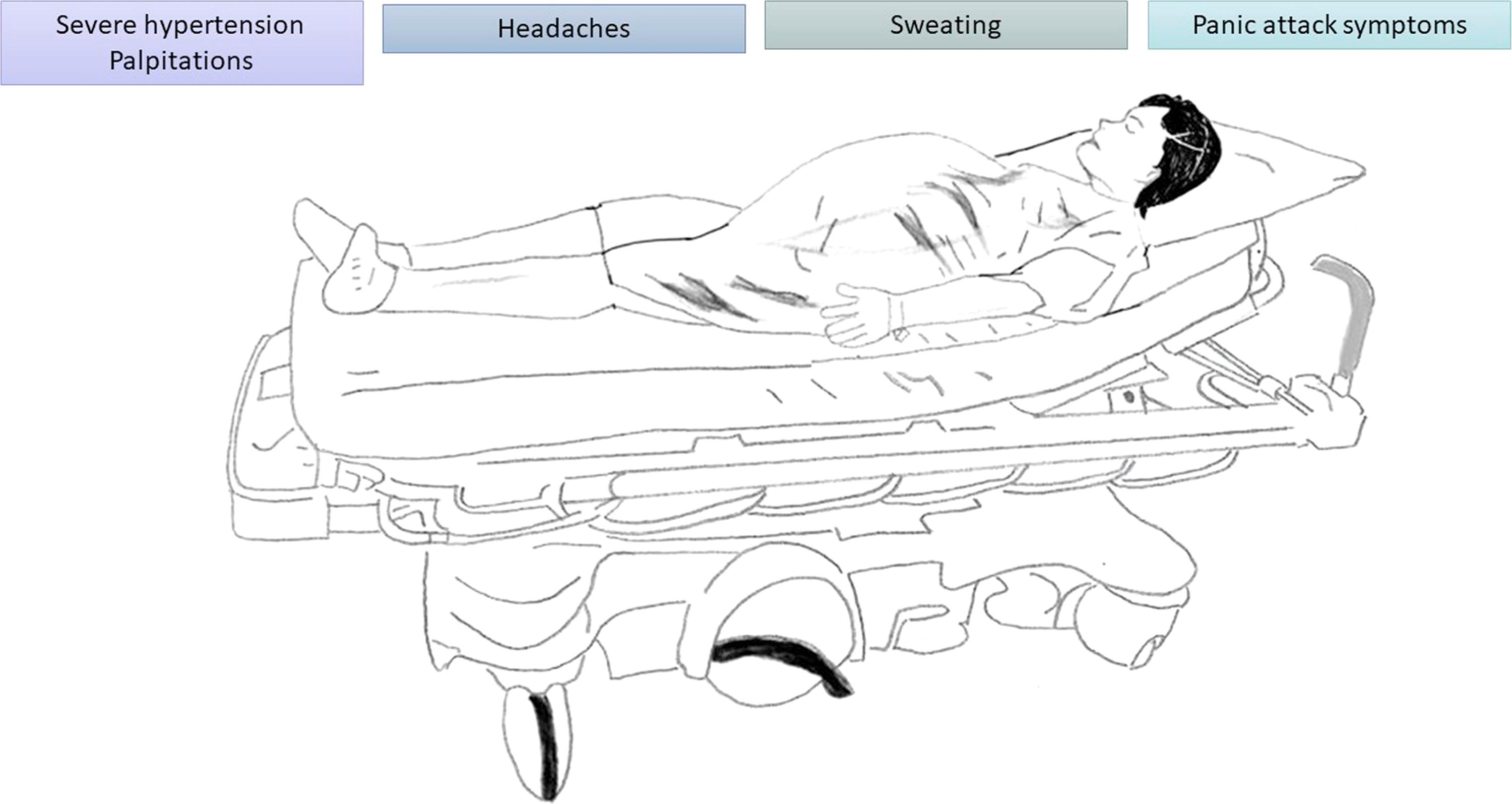Physical Address
304 North Cardinal St.
Dorchester Center, MA 02124
Describe the clinical presentation of pheochromocytoma in pregnancy.
Discuss appropriate management of pheochromocytoma in pregnancy.
Pheochromocytoma is a catecholamine-secreting tumor that arises from chromaffin cells of the adrenal medulla or the sympathetic ganglia.
Symptoms ( Fig. 24.1 ):
Severe hypertension—often difficult to control. Patient may have paradoxical supine hypertension with normal blood pressure in the sitting or erect position. This is because the gravid uterus can compress the tumor in the supine position and trigger catecholamine release
Paroxysmal or persistent hypertension
Headaches
Palpitations
Sweating
Panic attack-type symptoms

Presents similarly to hypertensive disorders of pregnancy, but pheochromocytoma rarely has proteinuria and in pheochromocytoma the hypertension persists after childbirth ( Table 24.1 )
| Intermittent labile blood pressures |
| Alternating hyper- and hypotension |
| Hypertension that worsens with beta-blockers |
| Paroxysmal symptoms of anxiety, diaphoresis, headache, palpitations, etc. |
| Family history of pheochromocytoma |
| Café-au-lait macules |
Initial diagnosis is made by measurement of blood and/or urine catecholamines and their metabolites. As in nonpregnant women, the diagnosis is usually based upon the results of 24-hour urinary fractionated metanephrines and catecholamines and plasma fractionated metanephrines. However, clinicians must be aware that treatment with labetalol may give false positive results to this test
The localization of the neoplasm includes the use of ultrasound, MRI, and CT scan
MRI examination (without gadolinium) has high sensitivity and specificity in pregnancy
Ultrasound is convenient with no harm to the fetus and is often the first method to discover pheochromocytoma during pregnancy. The disadvantage is poor sensitivity, especially for small adrenal pheochromocytomas and extra-adrenal paragangliomas
CT scan examination has a high sensitivity for the diagnosis of pheochromocytoma. However, its use in pregnancy is limited due to concerns for fetal exposure to radiation
Nuclear examination such as 131I iodo benzyl guanidine (MIBG) scintigraphy and octreotide are specific and sensitive diagnostic methods but are not appropriate during pregnancy
Become a Clinical Tree membership for Full access and enjoy Unlimited articles
If you are a member. Log in here